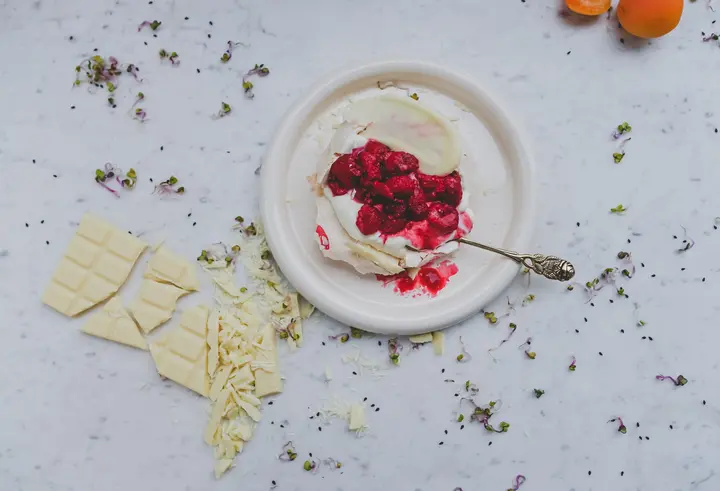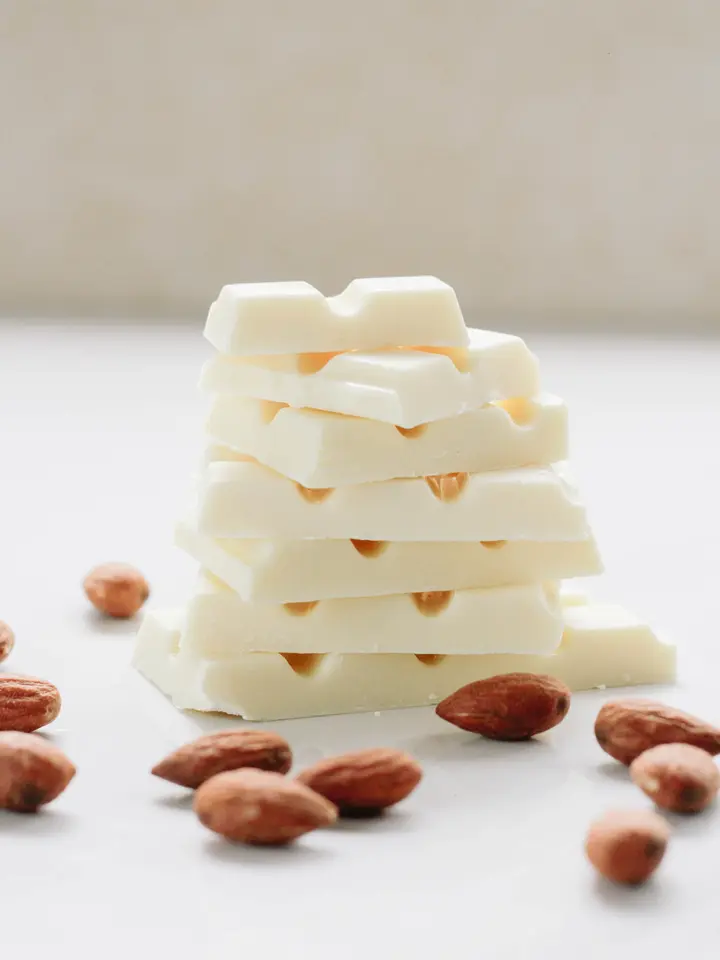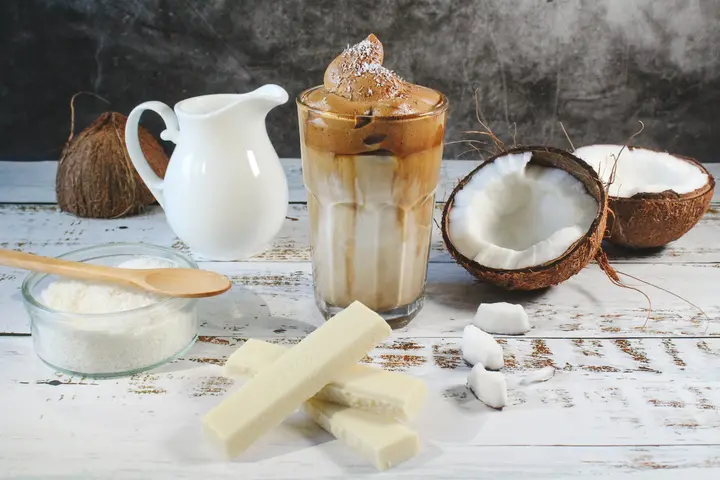The shocking fact: white chocolate is not real chocolate!

Most dessert lovers have tried white chocolate – that light, creamy and sweet dessert that appears in macadamia nut cakes, mint bark, mousse candies and a lot of other delicious foods. Of course, one can also opt for straight white chocolate in the form of bars ranging in quality from those found in the supermarket to those specialized bars such as lemon oil and white chocolate with sea salt added.
Show key points
- White chocolate is made from cocoa butter, sugar, milk solids, and flavorings, but does not contain cocoa solids or nibs.
- Legally, white chocolate qualifies as chocolate in regions like the U.S., EU, and Canada if it contains at least 20% cocoa butter and
- 5% milk solids.
- ADVERTISEMENT
- The absence of cocoa solids gives white chocolate its ivory color and a smoother, creamier texture than milk or dark chocolate.
- Many chocolate purists argue that without cocoa solids, white chocolate lacks the flavor profile that defines traditional chocolate.
- The production process of chocolate involves separating cocoa liquor into cocoa solids and cocoa butter, with only the latter used in white chocolate.
- Some commercial products labeled as "white chocolate" may not meet legal standards due to the use of vegetable oils instead of cocoa butter.
- While white chocolate is a divisive treat among chocolate enthusiasts, it remains popular for its sweet, delicate, and creamy flavor.
White chocolate is a mixture of cocoa butter, dairy milk, sweeteners and other flavorings, but does not contain solids or cocoa nibs, but tends to be a polarizing dessert, especially among fanatical chocolate lovers who tend towards dark, low-sugar varieties that are high in cocoa. In fact, many chocolate lovers have claimed that creamy white matter is not chocolate at all, but rather a pale tradition that unfairly bears the name "chocolate". So is it really qualified to be chocolate or not?
Recommend
Legally, white chocolate is chocolate

When it comes to debating whether white chocolate can be considered real chocolate, there are two frameworks to consider: the legal definition of chocolate, and the taste of the product. By legal standards, white chocolate meets the definition of chocolate in countries where the term is regulated – such as the United States, the European Union and Canada – as long as it contains at least 20% cocoa butter, or fat expelled from cocoa beans, and 3.5% milk solids, usually in the form of powdered milk.
The difference between white chocolate and brown chocolate

All "real" chocolate starts with cocoa beans. In the early stages of chocolate making, these grains are finely ground into a soft brown dough called chocolate liqueur (no, not that type of alcoholic beverage). The chocolate liquor is then separated into its constituent parts: cocoa solids and cocoa butter.
Cocoa solids are responsible for the bitter flavor with fruity and nutty tastes, and the nanine acid in chocolate – in short, responsible for the flavors of "chocolate" (which is also the part that contains antioxidants). Cocoa butter is the fat of the cocoa bean, which is responsible for the silky, melted texture of chocolate. After separating the solids from the butter, they are mixed together again with sugar and/or dairy products in certain proportions according to the type of chocolate being made.
Here's the important part: when making white chocolate, cocoa solids are not added again, the final product consists of cocoa butter, sugar and milk. Since there are no solids from cocoa, it looks light yellow or ivory in color and is much smoother than milk chocolate or dark chocolate. The flavor of the product is delicate and milky, scented with a cocoa scent.
No granules, no chocolate.

But when it comes to taste, it can be difficult to consider white chocolate a real chocolate, as it lacks the actual cocoa beans that most of us associate with strong and varied chocolate flavors. In fact, many famous candy makers, such as Cadbury and Hershey, market "white chocolate" whose labels cleverly avoid using the word "chocolate" because candy here doesn't actually use enough cocoa butter or milk solids to meet the legal definition of chocolate. For example, Hershey's famous 'n' Creme cookie doesn't contain cocoa butter, but a blend of vegetable oils, including palm, chia and safflower oils. If you like light, sweet, creamy desserts, you'll probably love white chocolate – but you may want to double-check the ingredients before buying any, to make sure you already have cocoa butter in your choosing.
Those who say that white chocolate, while delicious, is not really chocolate, point to its lack of cocoa nibs. Some lovers of dark (and milky) chocolate claim that while cocoa butter provides a creamy texture, the real aroma and distinctive taste of chocolate lie in the chocolate bars, making white chocolate a "candy" rather than a "chocolate".








